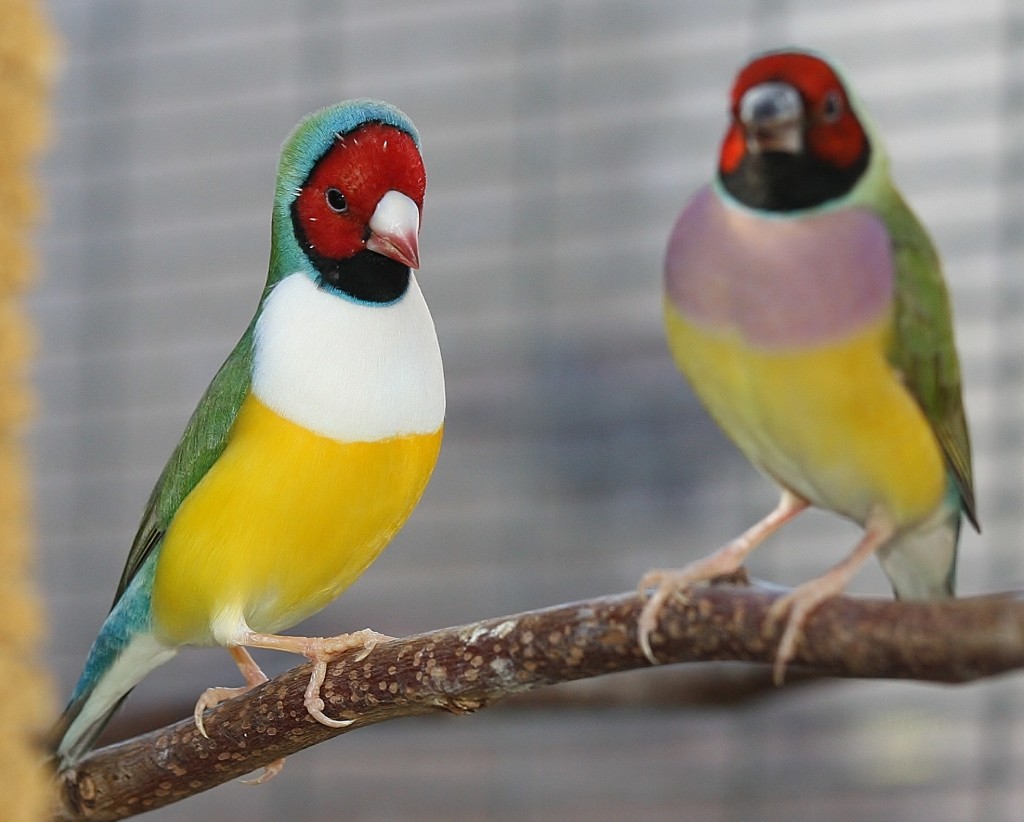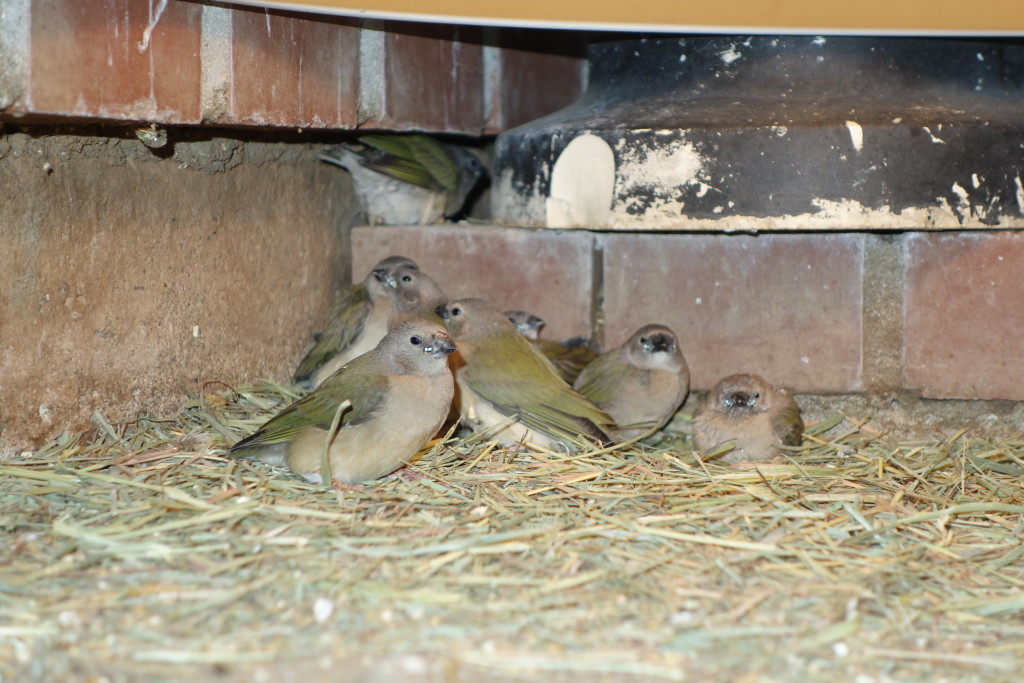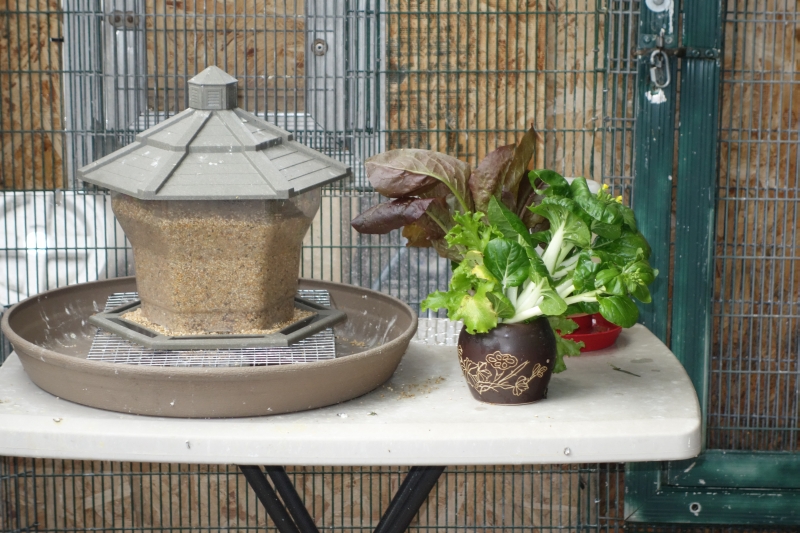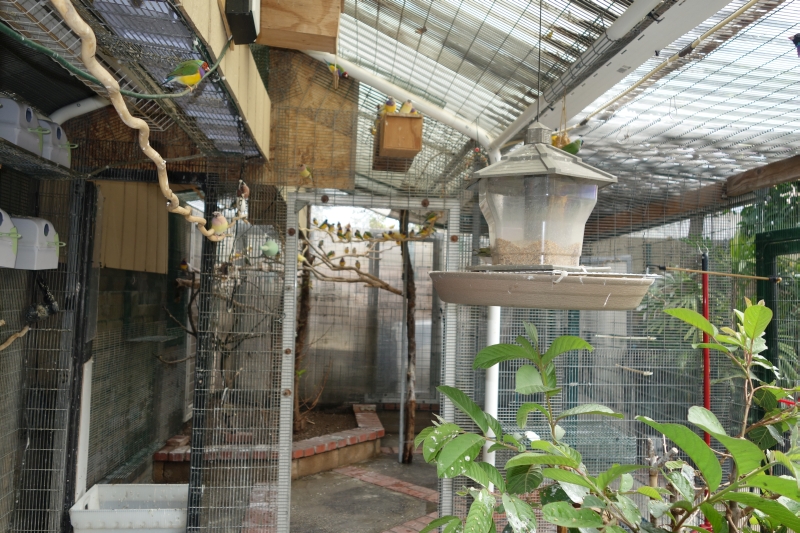Hello World, my name is Alex and I’d like to share my knowledge on Lady Gouldian finch care and breeding that had worked for me and my birds for over 12 years now here at the beautiful sunny Los Angeles California. This site is not just for newbies but also for other gouldian breeders that wants to try some of the techniques that had worked for me with success in keeping a strong, happy and healthy lady gouldian finches.
Before I start raising and breeding lady gouldian finches, my backyard outdoor aviary bird collection consists of mostly soft billed type bird species like the strawberry finch, shaft tails, canaries, owl finches, zebras, munias, silverbills, button quails and few non-aggressive hook billed like the Rosie burkes, Scarlet chested parakeets, and a pair of parotlets which they all shared the same community outdoor flight aviary. That aviary setup looks very nice and enjoyable to watch and it helps me relax after a hard days work. This hobby is a lot of work but very rewarding.
It was at my friends aviary that I first saw the Lady gouldian finch. They are small in size about 4-5 inches long, the feather coloring are just beautiful, vibrant and multi-color and are also called the Rainbow finch. Gouldians are very active birds, low noise and care is easy to medium. There are different types of head colors, Red, Black, Orange or Yellow, Grey and White. The Backside and wings coloring can be Green, Yellow, Blue, Silver and dilute, etc. The chest colors varies from purple, white and Lilac while the undersides are bright yellow to white going up to the lower back of the tail. It’s Australian finch and some said they are also seen in other countries like India, Indonesia, Malaysia, Philippines and other Pacific Ocean habitats.
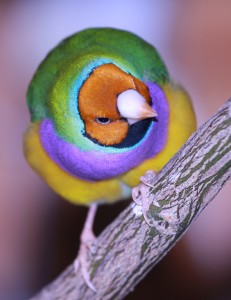
Max – Male Orange head-purple chest, green back normal
Reading books and surfing the web in search for good articles about lady gouldian finches and applied that knowledge to my birds that made sense to me and became successful in caring and breeding the gouldians. Don’t be discourage of what some people said about the gouldians being very delicate and hard to take care of and hard to breed. It is not true as long as you are prepared of what they need and the work you will be facing ahead. It didn’t stop me and I have proven that what they said was a wrong statement.
Sexing Lady Gouldian finch
Males will always have a much brighter coloring than the Females which are slightly lighter or duller color. Young gouldian finches are greyish/olive coloring and the undersides are pale brown. Sexing a young juvenile gouldian is quite difficult as they all have the same coloring until after the first molt. Picture below of matured Male and Female gouldians and juveniles born early spring 2015.
Lady Gouldian Finch Juveniles – Coloring of the young is not as beautiful as the adults and Sexing is difficult to tell at this stage
Food Gouldian finches love to eat
My Gouldian finches eats a variety of finch bird seeds like the canary seed, white proso millet, red Japanese millet and spray millet which are available at most pet stores. Gouldians also likes to eat homemade egg food mixed with a store-bought freeze-dried egg-food, green leafy vegetables (Chinese Bok-choi or romaine lettuce) finely crush chicken egg-shell, fine bird gravel, crush charcoal, salt spool and cuttlebone as part of their daily diet.
Feeding area #1 with small outside access (window opens from outside) the bird feeder setup is placed on top of a plastic folding table for easy clean-up and to prevent field mice and crawly bugs from climbing up and contaminate the food with their droppings and urine. It’s also where I put the fresh veggies and water. The bird feeder is placed on top of an over sized plastic garden pot dish to catch empty seed shells and tossed out seeds. Using the seed catcher, got rid of the mice infestation and some crawly bugs plus I can recycle the uneaten seeds which you’ll find out how much was tossed out by the birds.
Feeding area setup
Picture below is feeding area #2. It’s hanging down from the roof way above the ground and again with an attached over-sized plastic pot tray to catch-all the empty seed shells and uneaten seeds. Live guava trees inside the aviary. A plastic box container below the ground is what I used to put the nesting materials during the breeding season.
Fresh drinking water at all times is also very important. A bird bath dish should be available as they love to take a bath every day. Always change the water everyday if possible put a small solar water pump to move the water and I think the birds like it.
I have redesigned, rebuilt and expand my aviary whenever my birds get too many and crowded. The normal green backs are my favorite as they are stronger than any mutation and they adapts quickly with the changing temperatures here in Southern California. I’ve also bought some yellow backs and found out that they are as strong as the normal green backs and to have more colors. After a couple of years, I bought a pair of the blue back mutation as they became popular but that did not last after few months in the outdoor aviary. They are delicate and weaker breed. I also have some white chest green and yellow backs to compliment the purple chested and made the collection much colorful and enjoyable to watch.
Over several years with only Lady gouldians in my aviary and I have been lucky and happy with my decision to just keep it to one type of breed. All my gouldians are parent raised. I don’t practice foster parenting with other types of birds like the Society finch or Zebras. Other breeders do foster parenting for a reason and some for business specially breeding a mutation (Blues, Silver, etc.)
Year 2014, I have more than 200 gouldians in my aviary and the cost to feed them per month just for the seeds alone is around $75.00. When it gets too crowded, I sell some on eBay local Kijiji to cover some of the expenses and to avoid over crowding. When you have too many birds they will constantly fight for space and non-stop chasing each other which eventually get stressed out, get sick and some will get injured and some dies.
Thank you for visiting my website, I hope that you have enjoyed the reading and the photos of my Gouldian finch collection. Check out my other pages and please visit again for more updates. Happy birding.

